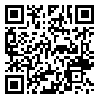BibTeX | RIS | EndNote | Medlars | ProCite | Reference Manager | RefWorks
Send citation to:
URL: http://refahj.uswr.ac.ir/article-1-2566-en.html
Introduction: Codependency is a pattern of relating that is characterized by living through or for another, controlling others, attempting to fix other people’s problems, and intense anxiety around intimacy. It occurs when someone (spouse, parent, sibling, coworker, or friend) allows another person’s addicted or dysfunctional behavior to consume their own thoughts, feelings, or behavior.
Recent studies show the relation between codependency and many psychological and behavioral problems. But according to the surveys, the relation between this phenomenon and divorce was not considered in the previous studies. In this way and due to the growing trend of divorce in our country and its adverse individual, social and family consequences the aim of this study was to determine the relationship between codependency and divorce.
Method: The population of this case-control study included all married and divorced people who lived in Tehran in 2014. First, in order to have easy access to divorced individuals two judicial complexes namely Shahid Mahalati judicial complex, located in region 15, and Shahid Mofateh judicial complex, located region 5, were chosen randomly from Judicial complex in Tehran which handle cases of divorce among couples. 63 Spann and Fisher codependency questionnaires with questionnaires of demographic characteristics were completed by divorce clients in these centers. In order to more control on confounding variables and similarities in family, social, and economic conditions of control group and the experimental group, four schools (two schools in each region) were selected in random. Then 65 mentioned questionnaires were completed by parents of students of these schools (35 and 30 questionnaires at region 15 and region 5, respectively). Collected data were analyzed regarding to descriptive and inferential statistics (logistic regression) by using software SPSSver.20. Instrument that used in this study was self-reported Spann and Fischer Codependency Scale that is designed in 1990. The Spann and Fischer Codependency Scale is a 16-item self-report instrument used to define and measure codependency in order to operationalize it as a personality disorder. Individual items are rated on a 6-point Likert scale, and then summed with two reversed items to describe codependency on a scale from a high of 96 to a low of 16. Scores on the codependency scale distinguished known groups; furthermore, scores correlated as expected with intrapersonal measures as well as interpersonal perceptions of parenting in the family of origin. In Iran, Mohammad Hassan Ashraf questionnaire (1389) using methods to validate the criterion validity, construct validity and Cranach’s alpha equal to 73/0 reported. Also Panaghi et al (1392) measured in Iranian society and Cranach’s alpha has been reported to 76/0.
Findings: In this research, 124 people with an average age of 34/13± 9/89 year were studied. So, 61 cases (49.2%) were married with an average age of 34/97 ± 11.59 year old and the rest were divorced with an average age of 33/32+7/92 year old. Also, among the married and divorced people, 60.7% and 85.7% were women respectively. As well as nearly 60 percent of people, both married and divorced met their wives or husbands traditionally. They were mainly introduced to each other by their families and friends. Among the divorced, more than 50 percent have expressed individual problems (lack of understanding) as their main reason for divorce and behavioral problems wife and Addiction wife were next in rank. On the basis of regression analysis, it was determined that codependency has a significant impact on the group variable (divorced / married), (p<0/001). So that the codependency rate among divorced was 1.117 times more than married people. Another finding of this study could be the inverse relationship between level of education and codependency.
Discussion: The result shows that the level of codependency was high among divorced people. So it can be concluded that unresolved forms of codependency in addition to psychological and behavioral problems that have been identified in recent research can result in serious problems in the couples’ life and, eventually, divorce. As a result more attention to codependency and its role in the individual, family and community problems is essential. Fortunately, it is treatable and the early identification of the codependent and providing treatment to them can reduce adverse outcomes of this widespread disorder. Unfortunately, in addition to the lack of attention to improvement process and treatment of codependency, there are not specialized and regular treatments in Iran. Therefore, it is essential to design and evaluate an effective intervention to improve patient’s codependency according to a customized, structured and measurable model and also tailored to the characteristics of codependent people in Iran, so experts could convenient service to all people with an effective intervention.
Received: 2016/09/19 | Accepted: 2016/09/19 | Published: 2016/09/19
| Rights and permissions | |
 |
This work is licensed under a Creative Commons Attribution-NonCommercial 4.0 International License. |





